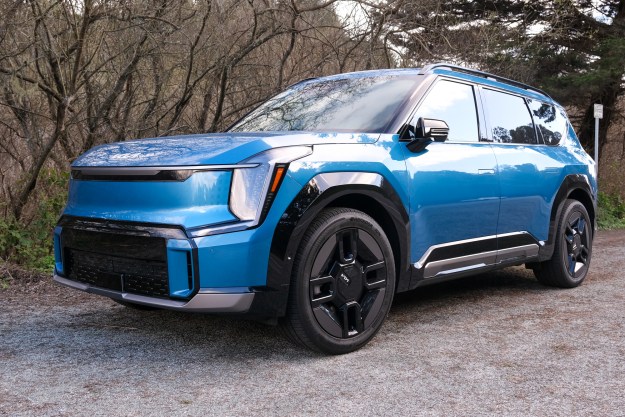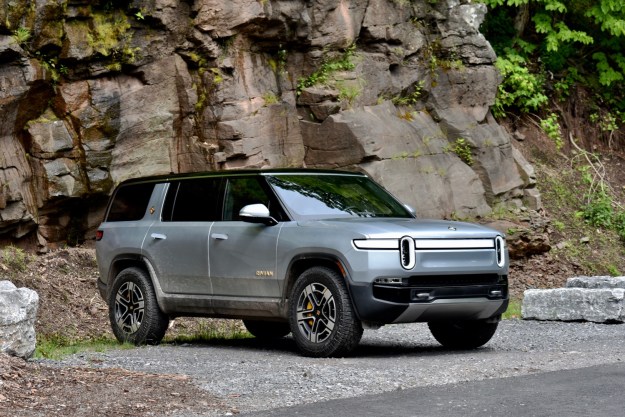The Altima continues to be a thoroughly satisfactory daily commuter for those looking to trade excitement for convenience and comfort.
Mid-size sedans are the second-largest group of cars sold in North America, selling upwards of 2.1 million cars this year. Only Compact SUVs sell more units. That makes the mid-size market segment absolutely crucial to every automaker’s financial success. It also means that automakers have to aim to please the widest possible group of buyers: the muddled middle of the new car buying public.
In this competition, the Toyota Camry reigns supreme as the most popular choice, followed by the Honda Accord, and then the Nissan Altima. Therefore, Nissan has a big market share to protect, and with strong contenders like the Kia Optima and Ford Fusion looking to lure buyers away from the Japanese brands, Nissan has a huge incentive to keep the Altima right in the sweet spot their buyers want.
To properly place the Altima in context, it’s important to remember that the buyers of mid-size sedans aren’t generally looking for high performance or spare-no-expense luxury, they’re buying an appliance based on brand reputation. Fuel economy, safety, comfort, convenience features, and likely resale value down the road are other incentives. Sports car or performance-luxury enthusiasts might snicker at that, but it’s as valid a set of priorities as anything else. By that standard for mid-size sedans, the Altima is likely to hold or improve its position for 2016, and here’s exactly why.
Improved Fuel Economy
Nissan is holding to a larger-displacement 4-cylinder engine as the mainstay of the Altima. Most cars will be delivered with a normally aspirated (read: no turbo) 2.5-liter engine that makes a modest 182 horsepower and 180 pound-feet of torque, unless you live in California where the output is three ponies less. You’ll also be able to buy a 3.5-liter V6 with 270 horsepower and 251 pound-feet of torque, but Nissan expects that to be a small part of the market. For my test run, I was offered only the 4-cylinder car to drive, and that engine delivers 27 MPG in the city, a class-leading 39 MPG on the highway, and a combined rating of 31 MPG.
Nissan did it by boosting compression from 10.1 to 10.3 inside the engine and by adding some aero to the grille and underside of the car. The new Altima has a slippery 0.26 coefficient of drag compared to the outgoing model at 0.29. For comparison, the egg-shaped 2015 Toyota Prius has a 0.25 drag coefficient.
The fuel economy story is great, but the truth is I spent most of the drive wishing we had the V6. The 2.5-liter base engine is a proven reliable unit, and most buyers will find it perfectly adequate, but the CVT really needs the additional torque of a larger engine. With the 4-cylinder, you’ll never forget that you’re in a car that has been optimized for fuel economy.
Continuously Variable Transmission
The Altima is exclusively a front-wheel-drive car, offered only with a continuously variable transmission regardless of your engine choice. From a driving perspective, that transmission is the Altima’s biggest weak point, but it’s a weak point shared with a growing number of competing cars.
With the 4-cylinder, you’ll never forget that you’re in a car that has been optimized for fuel economy.
Here’s a fact – automakers are choosing CVT designs because they help with fuel economy. The competing Honda Accord features a CVT, as does the Subaru Legacy. Yet CVTs deliver a strange driving experience because they work best when the engine is held at its most efficient RPM, which is generally high in its range. That means the engine tends to go to some whiny place and stay there while the car accelerates like it’s being pulled along by a big rubber band.
To combat this, automakers are going to great lengths to make their CVTs act like conventional automatic transmissions. Nissan and the others try to set it up so that the CVT imitates “gears” by holding the transmission at one ratio while the engine speed changes, but no manufacturer has yet perfect that simulation.
If you’re used to a conventional automatic, you’ll notice the difference in the Altima’s CVT, and you probably won’t consider it an improvement. But the Altima has been sold with a CVT since 2007, and the last year for a manual transmission option was 2009, so most repeat Altima buyers will be on at least their second CVT.
Almost All Mod Cons
One critical area of competition in the mid-size sedan market is features, and the Altima has a good story when it comes to the laundry list of stuff you can get. Pick out a top-of-the-line SL trim level and you’ll find almost every piece of kit the auto industry can provide.
For convenience and communications, you’ve got NissanConnect, which is much the same as every other manufacturer’s connectivity package. You can use the car’s SiriusXM receiver and an app on your phone to remotely lock or unlock the car, start the car, put the car in valet or teenager mode, and provide all the usual emergency functions in the event of trouble.
You can also use NissanConnect mobile apps in combination with your phone’s data plan to drive Pandora or other Internet radio apps, and it will navigate you using your phone’s navigation capabilities. Plus, with NissanConnect the Altima will read your text messages to you, or even read your Twitter feed out loud, as if anyone in the world ever wanted that.
What you won’t get is Apple CarPlay or Android Auto. Nissan stated that they would not offer those features on the Altima this year. That’s worth a demerit, especially since Chevrolet is touting the feature across their entire line.
On the safety side, the new Altima comes with everything you ever wanted, including blind spot monitoring, forward collision warning that looks two cars ahead, forward emergency braking, adaptive cruise control, and rear cross-traffic alert. That’s on top of all the usual stuff like a raft of air bags, stability control, and so on.
Comfortable and Quiet
Nissan’s engineers put a lot of effort into reducing cabin noise on the 2016 Altima, and it really shows. The cabin is noticeably free of road noise and the car’s ride is a lovely combination of smooth and tight. If you fancy yourself a sportier driver, Nissan has added the SR trim level, which features an upgraded suspension with special springs and shocks. You also get a 50% stiffer front anti-sway bar and a 250% stiffer rear bar. The Altima SR corners flat, I’ll give it that.
The Altima is made to satisfy the needs – not the daydreams – of the millions of people.
Nissan showed us their new cabin silencing materials, and their new sound-reducing windshield. Both are impressive, but the effect you care about is that the Altima delivers a peaceful interior for you to appreciate the Bose sound system in the SL trim. Most mid-size sedans are commuter cars, so this is actually a huge selling point for the Altima.
The Altima’s seats are similarly comfortable, and I have to give Nissan a shout-out for the telescoping steering wheel. The feature is common enough on most cars, but usually they telescope from much too far away to somewhat too far away. The Altima will bring that wheel right up to you, so you can really get yourself set up comfortably in the driver’s seat.
Competing on Price
Price is always a huge factor in the cutthroat mid-size market. These are not cars that inspire deep devotion to brand or model, so the purchase has to pencil out. The 2016 Altima base model starts at $23,325, including fees. Nissan didn’t let me near any base models, but going by the spec sheet it’s still a nice car. You get a CD player, power windows and mirrors, and the mechanical underpinnings are all the same as higher trims.
Compare the Altima’s base price to the Honda Accord base model with CVT at $23,740, or the base Camry with a 6-speed automatic at $23,905, and you’ll see that the Nissan is competitive. You can boost any of these cars into the mid-30s by going with the top trim level and the V6 or hybrid engine. For reference, you can get the sportier Altima SR that I drove for $26,445 and the Tech-Luxury Altima SL with the 4-cylinder engine for $32,595.
The Bottom Line
The DT Accessory Pack
Up your game and the get the most out of your gear with the following extras, hand-picked by our editors:
Puremats Nissan Altima floor mats ($60)
Black Door Edge L Shape molding kit ($28.79)
Nissan Altima 4DR rear window roof spoiler ($74.25)
I wish I could tell you that the 2016 Nissan Altima was a particularly fun or memorable car, but it’s not. It’s a good value on a quality family and commuter car. The Altima is made to satisfy the needs – not the daydreams – of the millions of people who just need a reliable, comfortable, safe, and economical ride to get the family from home to work to school to wherever they may need to go. That’s what the Altima was designed to do, and it will do those things very well. And that’s why the Altima will continue to be one of the best-selling mid-size sedans on the market.
Highs
- Super quiet cabin
- Updated exterior looks current
- Comfortable
Lows
- Continuously Variable Transmission
- Lackluster 4-cylinder engine
- No support for Apple CarPlay or Android Auto
Editors' Recommendations
- 2022 BMW i4 first drive review: The real deal
- 2022 Nissan Pathfinder first drive review: More tech, more toughness
- 2021 Volkswagen ID.4 first drive review: Lightning bug
- Nissan creates a self-driving golf ball that always finds the hole
- Nissan and Renault are the latest automakers to ally themselves with Waymo









